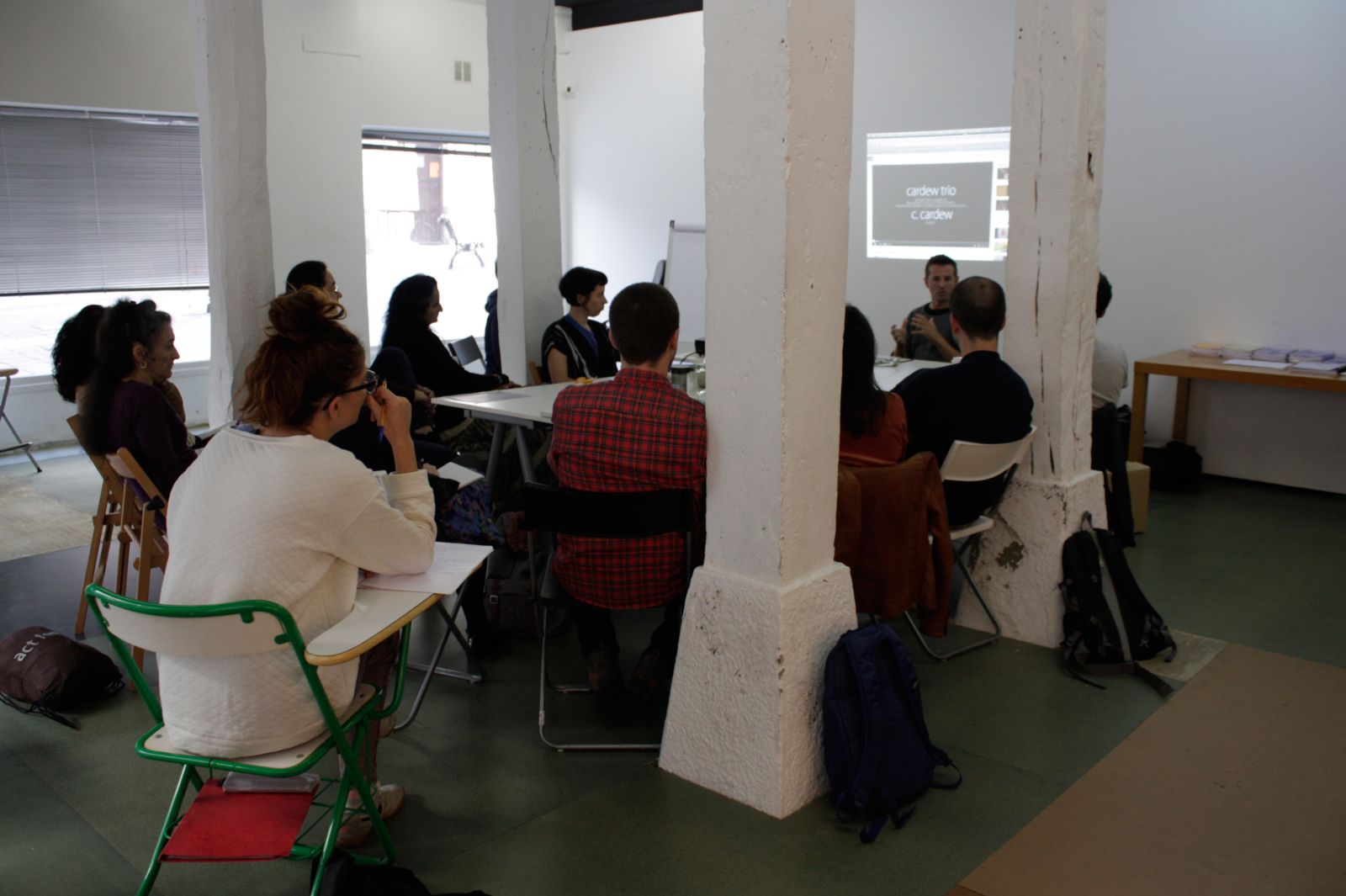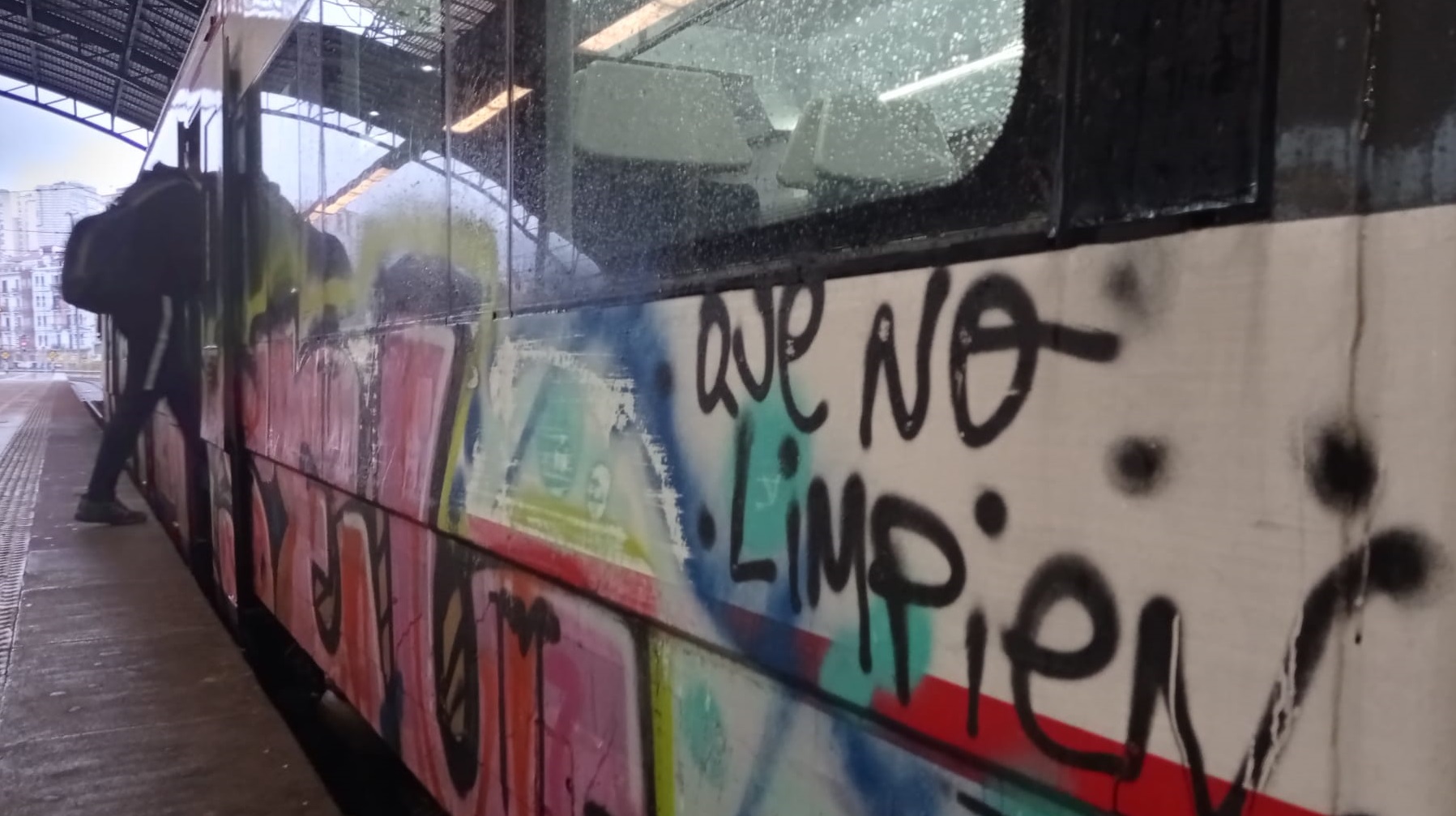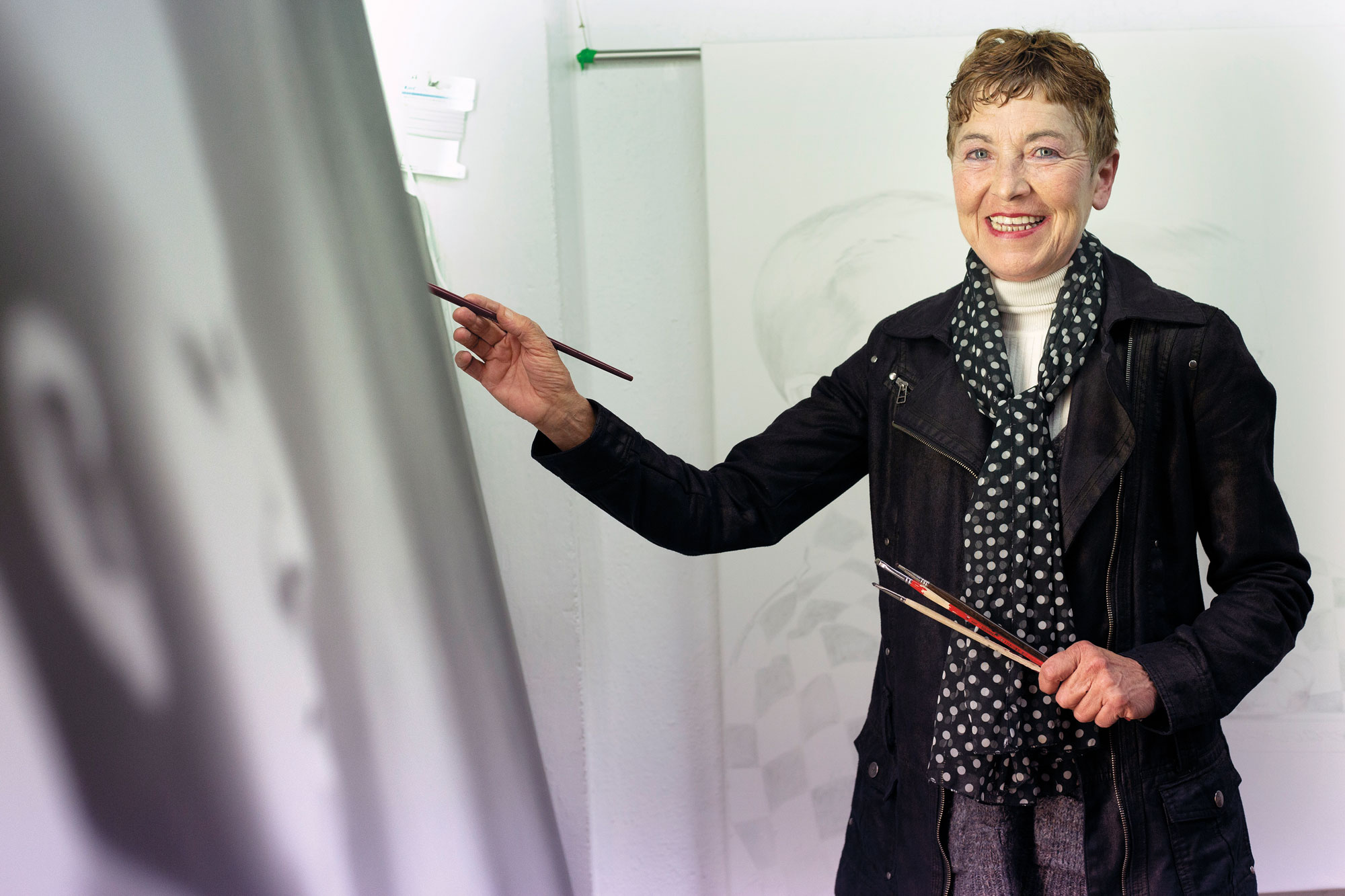A test site
- Last November the art and knowledge space Bulegoa z/b was twelve years old. From the office of the Solokoetxe Bilbaíno district, they have been developing programs, seminars, debates and research projects in the field of contemporary art for years. It is the collective character and character of the project, and they are doing so in their activity, in the constant reception with artists, researchers, agents, platforms and institutions of the environment and abroad. The survival of such creative and independent projects is not easy, so we take advantage of the anniversary excuse to immerse Bulegoa in the z/b model project and bring to these lines programs that have marked a milestone.

The desire to share a space was the starting point of the Bulegoa z/b project. In the field of sociology, the living arts, criticism and police, at the end of 2009 Beatriz Cavia, Isabel de Naverán, Miren Jaio and Leire Vergara returned with the thesis, and collaborated in the university and were also in the practice of the curator. They wanted to share knowledge and create a place where contemporary art theory and practice would merge, based on a small structure. In this small-scale office, the four women would own the project, with special attention to the ways and times of implementation. The office, s/n, emerges as a meeting place, an autonomous project that would work outside the spotlights.
Thus, in November 2010, it opened Diaphane spaces of only one hundred square meters in the bilbaíno district of Sokoloetxe. To contextualize the influence – and today – of the z/b office in our artistic context, it is interesting to see how the cultural landscape around us was in the early 2010’s. Santi Eraso left Arteleku in 2006 and the art centre in Loiola would close its doors forever in 2014. Then, Tabakalera and its cultural project were still in a state of draft; the international center of contemporary culture would open its doors for the first time in summer 2015. The Rekalde Room in Bilbao, by various internal organizations, no longer had the impact it had years before, and the Alhóndiga de Bilbao would open in 2010. The Montehermoso center of Vitoria-Gasteiz was led by Arakistain in the period 2006-2011 and in this period, along with Beatriz Herraiz, they pioneered the development and implementation of gender equality policies in the fields of contemporary art. In the Basque institutions, therefore, a transitional period was taking place, some models were being reconsidered, a time that would have been good to start an independent project.
Moving away from the exhibition format and performing artistic practice. They wanted to focus on other display and dissemination formats and devices, such as seminars, workshops, cinematographic projections, publications or artistic stays. In the first few years, in order for the project to be properly ruined, it was learned from others who looked carefully at the exterior and the environment, creating alliances and weaving a professional network of trust. TkH working in the practice, research and dissemination of living arts and performance: The Serbian platform Walking Theory, or the Dutch art organization If I Can’t Dance- I Don’t Want To Be Part Of Your Revolution, which explores the evolution and typology of performance and performativity in contemporary art, were, among others, artistic structures that followed closely.

Thus began, among others, 18 photographs and 18 history projects carried out in collaboration with If I Can’t Dance, which supported on a trip a work by Isidoro Valcárcel Medina, or the film program Cine Contra, the most veteran program that Bulegoa z/b currently has. Marta Popivoda of Walking Theory, previously mentioned, created the Illegal Film in Belgrade in 2007. It is an open and self-educational program in which films that are difficult to see in local contexts are shown, with the intention of watching movies and commenting on them. Each year a program coordinator is chosen, inviting different actors to choose, present and discuss the film. Although Illegal Film started to be organised in Zagreb, Paris, Istanbul, Belgrade and Berlin, the only programme that remains in operation is Bilbao. Since 2010, many artists from around the world have managed this program.
Space is The Place / The Place is Space is a long-term program. It is structured through periodic meetings whose objective is to analyze the ability of art to look at our environment from another perspective and its role as a critical practice. With this project, started in 2018, in 2021, they were scholarship holders at the Spanish Academy of Rome and brought together the artistic contexts of Bilbao and Rome, thanks to various activities and days that were anchored in the Italian capital. Within this programme, last November a two-day Ura Dakar seminar was organized at the Bizkaia Aretoa in Bilbao, in which we were invited to work and speculate with the imagination, fiction and memory inscribed in the bodies through a cycle of performance and conferences. With the option of developing the days in Bizkaia Aretoa, we were faced with the mega-urban development of the bank of Abandoibarra; where before there were shipyards and industry, today buildings such as the Guggenheim or the Iberdrola Tower are built.
One of the characteristics of Bulegoa z/b projects is that they are long-term projects, that is, research programmes that are being developed year after year. Here is the session of the Exhibition (1977-2017). Through this program, in collaboration with Azkuna Zentroa, some of the concrete exhibitions that were organized in 1977 and 2017 are analyzed, contacting concrete texts and concrete police stations. This retrospective is an opportunity to capture exhibitions that help us understand the present, critical texts of the time and events, as well as to imagine what future exhibitions will look like. In February 2023, a seminar on the iconic exhibitions that were organised in the years 2007-2017 will be held at the Alhóndiga in Bilbao.

Drawing attention to the reflections of the different police stations that went through this program, they concluded that when making the history of the exhibitions there is a shortage of materials, that many files have been lost and that when making a concrete genealogy of the exhibitions is much lost information. Behind this is the transitory nature of the exhibition format and the fragility and instability of the practices developed under conditions of independence. With the intention of flying it, the program Material Voices: Feminist genealogy of the work of exhibitions, which tries to answer the question What does it mean to make exhibitions from a feminist perspective?
Today, Beatriz Cavia, Miren Jaio and Leire Vergara lead the solid Bulegoa b/z project, which undoubtedly have become a reference both in our artistic context and outside it. That’s why, among other things, the recognition of the Tours Awards in 2018. Twelve years have passed since the launch of a project driven by the effort and work of four women, who have brought the Basque artistic context into contact with the international, have put into practice the critical pedagogy and have managed year after year to become a community of commissioners, artists, researchers and cultural agents. Spend another twelve years learning together and interacting, enhancing spaces like the z/b Office that are the best place to test.
Behin batean, gazterik, gidoi nagusia betetzea egokitu zitzaion. Elbira Zipitriaren ikasle izanak, ikastolen mugimendu berriarekin bat egin zuen. Irakasle izan zen artisau baino lehen. Gero, eskulturgile. Egun, musika jotzen du, bere gogoz eta bere buruarentzat. Eta beti, eta 35... [+]
This text comes two years later, but the calamities of drunks are like this. A surprising surprise happened in San Fermín Txikito: I met Maite Ciganda Azcarate, an art restorer and friend of a friend. That night he told me that he had been arranging two figures that could be... [+]
On Monday afternoon, I had already planned two documentaries carried out in the Basque Country. I am not particularly fond of documentaries, but Zinemaldia is often a good opportunity to set aside habits and traditions. I decided on the Pello Gutierrez Peñalba Replica a week... [+]





















